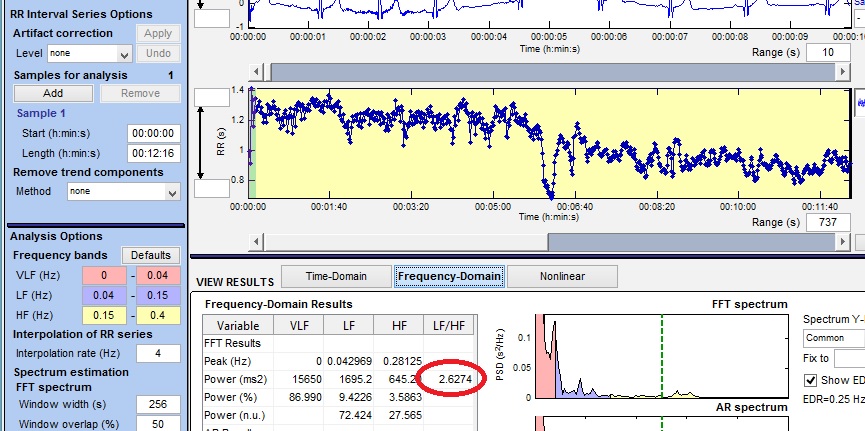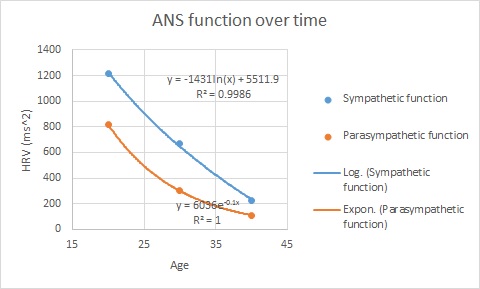Next Level Active Recovery for Endurance Athletes: Lessons from the East
Alan Couzens, MS (Sports Science)
Feb 16th, 2015

“To maintain the P/PC balance, the balance between the golden egg (production) and the health and welfare of the goose (production capacity) is often a difficult judgment call, but I suggest it is the very essence of effectiveness”
- Steven Covey
This is part of a 5 part series on using Heart Rate Variability to guide your training. You can find part 1 here, part 2 here, part 3 here, part 4 here & part 5 here.
In my last post, I explored the concept of sympatho-vagal balance, or the balance between an athlete’s ‘hype up’ and ‘calm down’ aspects of the autonomic nervous system. I suggested that comparing the SDNN and RMSSD numbers of an athlete provides a good ‘window’ into the relative balance of these 2 opposing forces.
At the risk of complicating things a little further, while SDNN/RMSSD has some research support as a good indicator of this balance (Huang and Wang, 2013), most of the research on the concept has focused on other metrics – namely the high and low frequency components of HRV. The math starts getting a bit tricky at this point with the use of Fast Fourier Transformations to break the HRV into its sinusoidal components (!). I’ll spare you from going too far down that rabbit hole. Fortunately, this is another metric that Kubios calculates for you (circled below).

Research suggests that the ratio of these 2 metrics provide a good quantitative picture of the relative sympathetic and vagal ‘tone’ of the athlete. Put in athletic terms, you could think of these 2 numbers as a strong indicator of the anabolic and catabolic ‘strength’ of the athlete. When HF is high, the athlete’s rest and repair systems are strong. When LF is high, the athlete’s catabolic energy generation systems are strong. While both of these tend to get weaker with advancing age, it is the parasympathetic system (HF) that takes the first hit – for male athletes in their 30’s. See chart from study data by Yukushita et al. (2010) below.

This has VERY practical significance to '30 something' athletes….
As you can see from the chart, parasympathetic function (HF) naturally drops off significantly for males in their 30’s (more so than sympathetic function). This widens the gap between LF and HF and potentially leads to the decreased response to training that we see as athletes get older.
In other words, as athletes enter these age ranges they may still have the sympathetic response to lay down hard training, but their ability to recover from it is significantly diminished. Sound familiar?
Research backs this up. Studies have shown a strong relationship between the LF/HF ratio and training response. This makes intuitive sense as you’ll remember that this LF/HF ratio is a good indicator of the relationship between the catabolic ‘fight or flight’ & the anabolic ‘rest and repair’ strength of the individual. So, in order for athletes to 'repair the systems' quickly and efficiently after tearing them down with hard training, we need their anabolic response to be high. A quantitative example of this relationship between the LF/HF ratio and the athlete's training response is shown visually in data from the Hautala study below….

Put simply, in order to get the most adaptation ‘bang’ for each training ‘buck’, we want the LF/HF ratio to remain relatively low (ideally below 2), for as much of the 'non-training' part of an athlete's life as possible. When this rises, training response falls & we will want to consider a period of recovery to bring that LF/HF number back down. For us, Type-A, western athletes, that can only mean that dreaded 4 letter word – REST. Or does it?
I recently returned from my first trip to Asia. Asia is a land of contrasts and one of the most striking is that, despite the ‘busy-ness’ that comes with a very high population density, every morning seems to begin at a slow pace and with a sense of peace. I was the odd man out running laps around the park as the bulk of park goers were deeply involved in their Tai Chi Chuan or other ('interesting') Chinese exercise routines.
Initially, I found this contrast odd and a little distracting but as the days passed, I found myself being drawn to it. “What a great way to start the day”, I thought – you roll out of bed, head to the park and progressively, gently wake the system up, as opposed to our Western routine of being startled awake by the alarm clock before hitting the coffee (hard!) and running out the door to make the train on time.
“Reality” or not, this type of lifestyle takes a toll, both in terms of our general health &, for athletes, our adaptive energy. Could we, as working athletes, enhance our recovery by being a little more ‘Eastern’ & doing more than simply halving our regular training load for a 'recovery week'? Could we actually ‘dial up’ the recovery abilities of the body by spending some of our recovery time (sessions, weeks) activating & literally ‘training’ our parasympathetic system? Some studies would suggest yes…
Self Myofascial Release (SMR) – In a 2002 (Delaney et al.,) study on the effects of myofascial trigger point therapy on autonomic tone, researchers observed a 27% increase in the parasympathetic response of subjects (LF/HF ratio) after 20mins of trigger point therapy (2.8->2.2)
Yoga – Sarang & Telles (2006) showed a 15% increase in parasympathetic response (measured via LF/HF ratio: 2.2->1.9) following a 35min combined yoga/cyclic meditation session. In another 2007 study by Khattab et al., Yoga practitioners showed a 54% higher rMSSD number than controls following 1 x 90min (Iyengar) yoga session per week. This is on top of the obvious benefits of flexibility/mobility of a regular yoga routine to most 30+ triathletes!
Tai Chi – Lu & Kuo (2003) showed a 40% increase in parasympathetic response (measured via LF/HF ratio – 2.5->1.8) following a 40min session of Tai Chi Chuan.
The bulk of these studies utilized control groups that used more typical ‘Western’ passive recovery strategies for comparison – laying down, relaxing etc for the same duration as the experimental group. It is important to note that these control groups did not exhibit the same parasympathetic ‘bump’ with these passive relaxation strategies (and I'm sure the passive relaxation strategies didn't incorporate frequent Twitter checks either :-).
To put these parasympathetic increases into an athletic perspective, if we refer back to the training response chart above, these improvements in ‘vagal tone’ potentially equate to a 2-5% increase in training response from each unit of training that you do!
There is also additional benefit in your significantly diminished chance of picking up bugs when your immune response is perpetually compromised by an overactive sympathetic response. Several studies have shown a distinct relationship between stress and incidence of upper respiratory infection e.g. (Cohen et al., 1991, Stone et al., 1993)
Take home points:
* Our ability to continue to respond strongly to training over a long period of time is tied to the strength of our parasympathetic nervous system.
* Our training as ‘western’ athletes is incredible ‘yang’ sympathetic focused, perhaps to our detriment.
* The inclusion of short (20-40min), regular sessions designed to activate the parasympathetic system (SMR, yoga, mediatation, Tai Chi) may have a positive impact on the HF of the athlete and their subsequent response to conventional endurance training.
But don’t take my word for it, try it for yourself – see how low you can drive your own LF/HF number & the impact it has on your training response! By tracking LF/HF (or SDNN/RMSSD) you can assess both your readiness to respond to load and also the potential impact of strategies designed to hasten this process.
Recover smart,
AC
Tweet**************************
Don't miss a post! Sign up for my mailing list to get notified of all new content.
**************************
